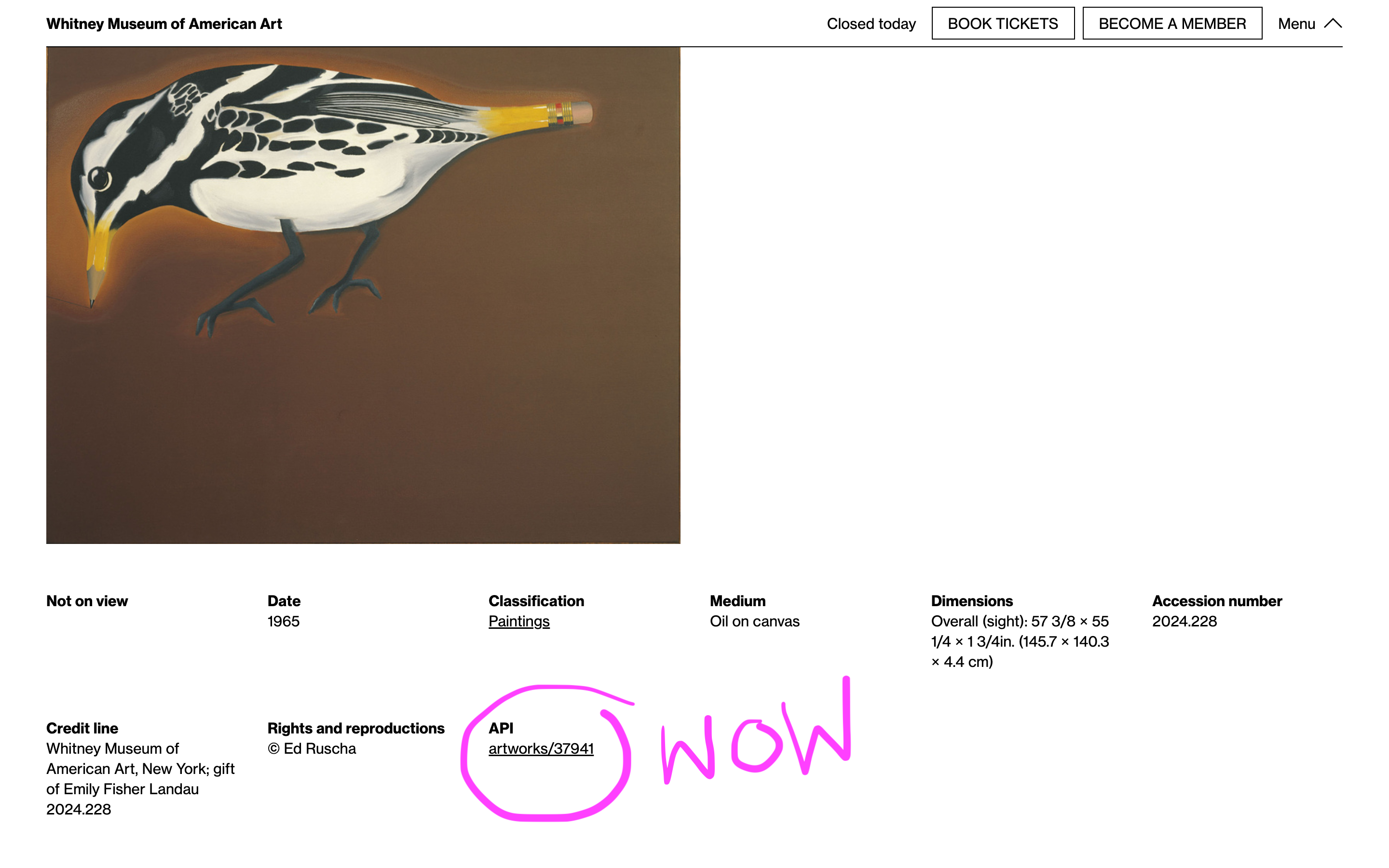Having an API always made sense for the museum. An API provides structured, always up to date, machine-readable access to our public data that complements our existing flat file Open Access datasets. The challenge was always a) how feature rich does that API need to be and b) can we include enough material to make it useful.
For a long time we’ve had what could probably be considered a semi-complete and semi-useful API for artists, artworks, exhibitions, and events, but I hesitated to do anything to make it very discoverable outside allowing people to stumble upon it if they happened to check whitney.org/api. It always felt like a chicken and egg problem where the API needed documentation to be useful, but I couldn’t write documentation until it had enough features and consistency to be useful, and that never felt pressing because no one was using the API because there was no documentation.
After sitting with this dilemma I decided to try and start making what seemed like the most accessible parts of the API more discoverable, in the hopes of gradually juicing usage to the point where it would be more justifiable to spend more time improving it. Given the number of other museums with APIs focused around their collection, I thought that adding visible callouts for API permalinks (taking inspiration from the Getty in this case) for artist and artwork pages on the site could start to get people who tend to notice and utilize these kinds of tools interested in what we might have to offer.

Around the same time I added some basic internal analytics to usage of the API, to keep tabs on monthly usage. Partly for curiosity and partly because we have no API key requirements or rate limits at the moment and it seemed responsible.
Over the last couple of years we’ve gradually added more links, and recently some actual documentation combined with improvements to how the API works and what’s included in different endpoints. During that period public usage (whether by people or bots) has gradually grown from a few thousand requests a month to 200–300k. It’s also moved from being 1 or 2 requests on every individual record, to more varied distribution across artists and artworks, better reflecting their popularity.
Usage of the API continues to trend upward, and I hope that as we have more uses for it internally and see increasing use externally we’ll continue to refine and expand its functionality.
If you’ve used the Whitney API at all or have thoughts about things we could add or change, please reach out, I’d love to know what you’re doing with it.